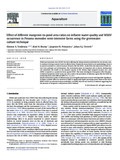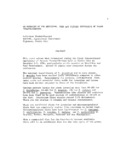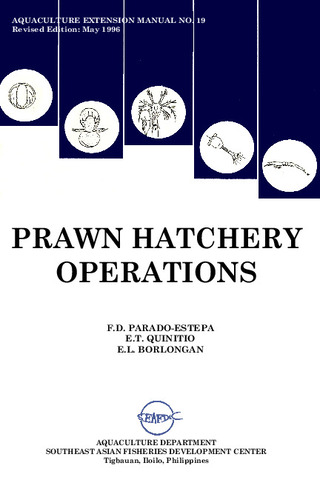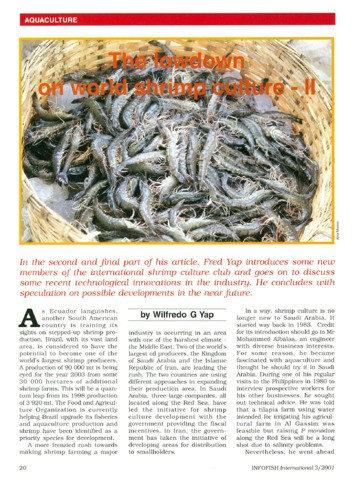Effect of different mangrove-to-pond area ratios on influent water quality and WSSV occurrence in Penaeus monodon semi-intensive farms using the greenwater culture technique
Share
Abstract
White spot syndrome virus (WSSV) has been affecting the shrimp industry worldwide for two decades now. It continues to bring economic losses to affected farms. Despite the many studies on its epidemiology, there is no proven treatment or control measure. Diseases, like the WSSV, results from the interaction of three factors: host, pathogen and environment. The environment plays an important role in disease development and determines the health or the immune capacity of the shrimp. High mangrove-to-pond area ratio (MPR) is reported as a protective factor against WSSV. This study investigates if mangroves affect the physicochemical properties of the water and soil as well as the prevalence of infectious agents like the WSSV by monitoring farms with different MPR (0:1, 1:1, 4:1).
Results showed that quality of influent water was not significantly better in farms with high MPR. Significantly higher available sulfur was observed in MPR-4; significantly higher percentage green vibrios in the soil in MPR-0. WSSV was detected in farms with MPR-1 and MPR-4 but did not result in an outbreak, suggesting that the presence of mangroves could prevent WSSV outbreak.
Suggested Citation
Tendencia, E., Bosma, R. H., Primavera, J., & Verreth, J. A. J. (2012). Effect of different mangrove-to-pond area ratios on influent water quality and WSSV occurrence in Penaeus monodon semi-intensive farms using the greenwater culture technique. Aquaculture , 362-363, 72-79. https://doi.org/10.1016/j.aquaculture.2012.07.020
Subject
Taxonomic term
Collections
- AQD Journal Articles [1248]
Related items
Showing items related by title, author, creator and subject.
-
An overview of the nutrition, feed and feeding techniques of prawn penaeid/shrimps
Piedad-Pascual, Felicitas (Philippine Council for Aquatic and Marine Research and Development, 1989)This paper echoes what transpired during the first International Conference of Penaeid Prawns/Shrimps held in Iloilo City in December 4-7, 1984, particularly on the Nutrition nd Feed Development. Around 25 papers were ... -
Prawn hatchery operations
Parado-Estepa, Fe D.; Quinitio, Emilia T.; Borlongan, Emeterio L. (Aquaculture Department, Southeast Asian Fisheries Development Center, 1996-05)The manual, an updated version of the 1984 SEAFDEC/AQD manual, presents the underlying principles and step-by-step instructions of prawn larval and post-larval rearing. The techniques described are not only applicable to ... -
The lowdown on world shrimp culture - II
Yap, Wilfredo G. (INFOFISH, 2001)This paper introduces some new members of the international shrimp culture club and goes on to discuss some recent technological innovations in the industry, particularly the polyculture of tilapia (mainly Oreochromis ...




